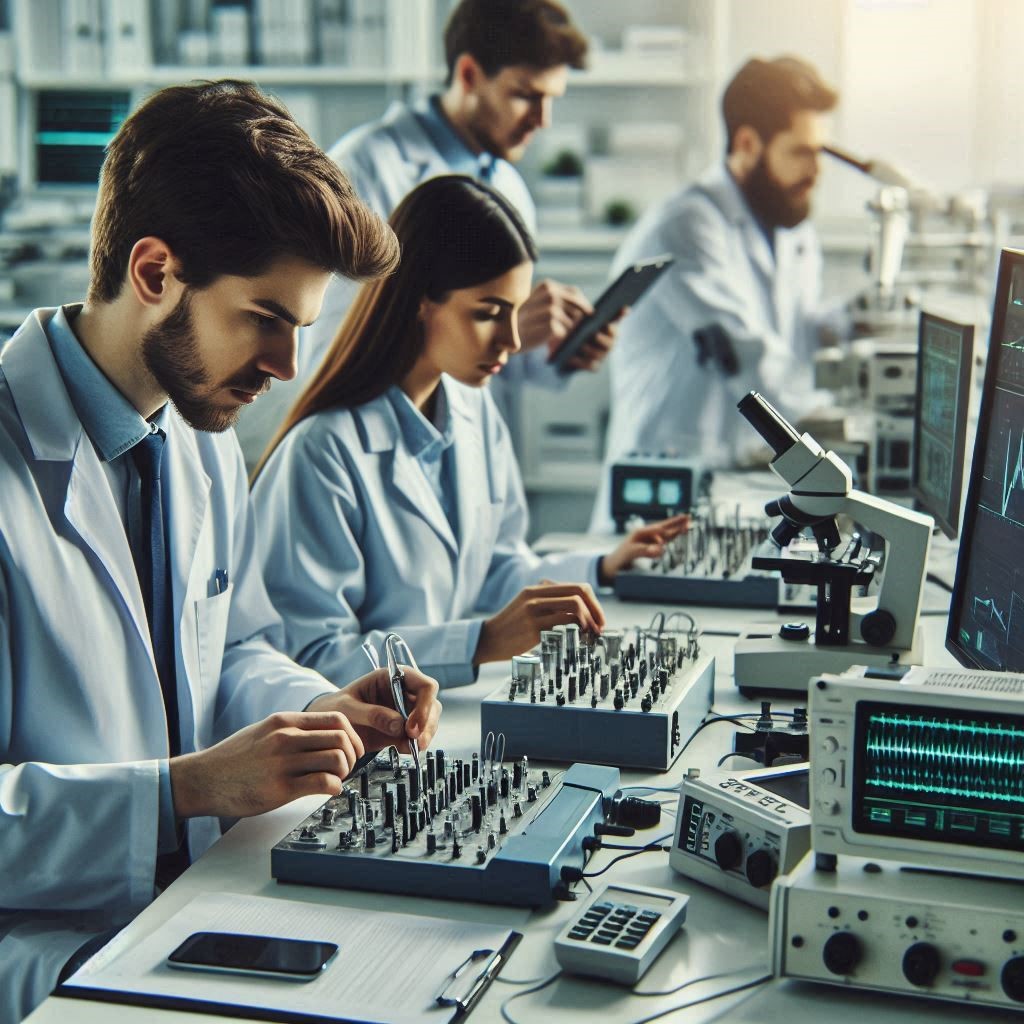The calibration services industry is evolving rapidly, driven by technological advancements and increasing demands for precision, efficiency, and compliance. As industries across sectors like manufacturing, aerospace, healthcare, and telecommunications become more complex, calibration services must adapt to ensure equipment accuracy and reliability. Here’s an optimized look at the future of the calibration services industry, highlighting key trends and innovations.
1. Integration with Industry 4.0
Overview: Industry 4.0 technologies, including IoT, artificial intelligence (AI), and big data, are transforming calibration services.
Key Innovations:
- IoT Connectivity: Enables real-time monitoring and remote diagnostics of calibration equipment, reducing downtime and allowing for proactive maintenance.
- AI and Machine Learning: Enhance predictive analytics for equipment failure, optimize calibration schedules, and improve accuracy by analyzing vast amounts of data.
Impact: These technologies will drive more efficient and precise calibration processes, integrating seamlessly with automated manufacturing and industrial systems.
2. Advancements in Automation and Robotics
Overview: Automation and robotics are revolutionizing calibration processes with increased speed and accuracy.
Key Innovations:
- Automated Calibration Systems: Perform repetitive calibration tasks with high consistency, minimizing human error.
- Robotic Systems: Handle complex calibration tasks in hazardous or challenging environments, improving safety and reliability.
Impact: Enhanced automation will streamline calibration operations, reduce manual labor, and improve service delivery.
3. Expansion of On-Site Calibration Services
Overview: On-site calibration services are growing in demand to minimize operational disruptions and improve convenience.
Key Innovations:
- Mobile Calibration Units: Provide flexibility and quick response for on-site calibration needs.
- Real-Time Remote Access: Allow technicians to perform calibrations and diagnostics without transporting equipment.
Impact: On-site services will reduce downtime and logistical challenges, offering more immediate and accessible calibration solutions.
Download PDF Brochure @
https://www.marketsandmarkets.com/pdfdownloadNew.asp?id=222898714

4. Emphasis on Precision and Traceability
Overview: The need for precise and traceable calibration is increasing due to stringent quality and regulatory requirements.
Key Innovations:
- Enhanced Calibration Techniques: Improve accuracy and reliability in various measurement systems.
- Advanced Documentation: Provide comprehensive records for regulatory compliance and traceability.
Impact: Improved precision and traceability will support industries in meeting high standards of quality and regulatory requirements.
5. Growth in Metrology and High-Tech Calibration
Overview: Metrology and high-tech calibration are advancing to support complex and emerging technologies.
Key Innovations:
- High-Precision Calibration: Addresses the needs of nanotechnology, quantum computing, and advanced manufacturing.
- Cutting-Edge Metrology: Offers solutions for highly specialized measurement and calibration requirements.
Impact: Calibration services will evolve to meet the demands of innovative technologies and ensure accurate measurements across diverse applications.
6. Increased Use of Data Analytics
Overview: Data analytics is becoming crucial for optimizing calibration processes and service delivery.
Key Innovations:
- Predictive Analytics: Uses historical data to forecast potential issues and optimize calibration schedules.
- Performance Insights: Provides detailed analysis of equipment performance, aiding in proactive maintenance and decision-making.
Impact: Data-driven insights will enhance the efficiency and effectiveness of calibration services, leading to better equipment management and reduced downtime.
7. Focus on Environmental Sustainability
Overview: Environmental sustainability is becoming a priority in calibration services.
Key Innovations:
- Eco-Friendly Practices: Implementing energy-efficient processes and reducing waste.
- Sustainable Materials: Using recyclable and environmentally friendly materials in calibration operations.
Impact: Sustainable practices will align with corporate responsibility goals and regulatory requirements, contributing to a greener industry.
8. Enhanced Customer Experience and Service Delivery
Overview: Improving customer experience is a growing focus in the calibration services industry.
Key Innovations:
- Digital Platforms: Provide easy access to calibration records, service requests, and real-time updates through online portals.
- Flexible Service Options: Offer extended hours, expedited services, and customized solutions to meet client needs.
Impact: Enhanced customer service will lead to higher satisfaction and more streamlined interactions with calibration service providers.
The future of the calibration services industry is marked by technological advancements and a focus on precision, efficiency, and sustainability. Integration with Industry 4.0 technologies, advancements in automation, expansion of on-site services, and a commitment to environmental sustainability will drive the industry forward. As industries continue to demand higher accuracy and reliability, calibration services will evolve to meet these needs, ensuring that equipment operates at peak performance and compliance across diverse applications.
